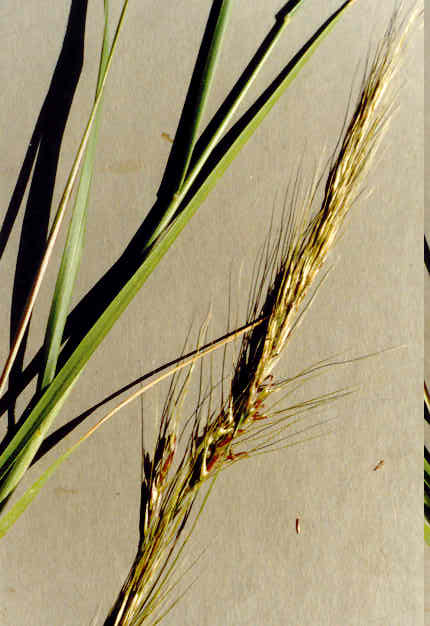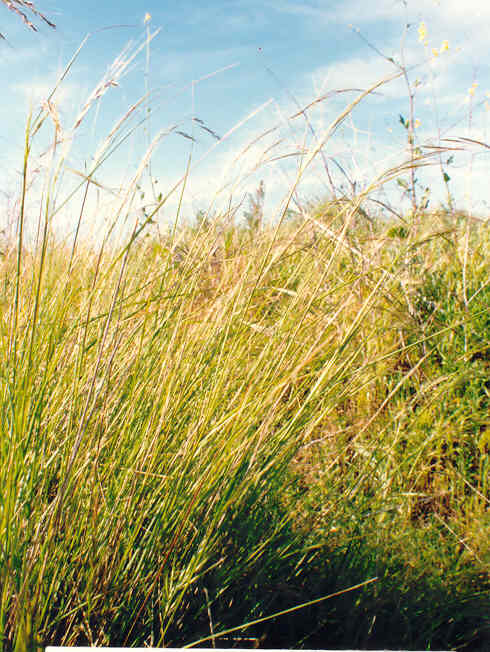
Nassella lepida (Hitchc.) Barkworth
=Stipa lepida
 |
Nassella lepida (Hitchc.) Barkworth=Stipa lepida
Poaceae (Grass Family)NativeFoothill Needle-GrassSmall-Flowered Stipa |
March Photo
Plant Characteristics:
Slender perennial, puberulent below the nodes, 6-10 dm. tall; sheaths
smooth, rarely puberulent, +/- villous at throat; ligule very short; blades 1-3
dm. long, flat, 2-4 mm. wide, pubescent on basal part of upper surface; panicle
rather loose, open, 1.5-2 dm. long, with slender distal branches; glumes
3-nerved, smooth, acuminate, the 1st 6-10 mm. long, the 2d ca. 4-8 mm. long;
lemma ca. 6 mm. long, sparingly villous; awn indistinctly twice bent, 2.5-4 cm.
long, scabrous.
Habitat:
Dry slopes below 4000 ft.; Chaparral, Coastal Sage Scrub, etc.; L. Calif.
to n. Calif.; Channel ids. March-May.
Name:
Greek, stupe, tow, alluding to the feathery awns of the type
species, Stipa pennata.
(Hitchcock 445). Lepis, Greek meaning a flake or scale.
Lepida means scaly or like a scale.
The reason not evident from the description of the plant.
(John Johnson). Latin, nassa,
a basket with a narrow neck. (Hickman,
Ed. 1276). Refers to the neck-like
tip of the lemmas. (my comment).
General:
Rare in the study area, having been found only twice, first on a small
bank, above the 23rd. St. bench and again near the foot of the bluff along the
lower path from 23rd. St. to the next major draw going toward the Delhi area.
There are several clumps of the grass in the first location. (my comments). Stipa
species have been known to cause hay fever and asthma.
(Fuller 383). About 150 spp. of temp.
regions. (Munz, Flora So. Calif. 1002).
Text Ref:
Abrams Vol. I 132; Hickman, Ed. 1276; Munz, Flora So. Calif. 1004;
Roberts 48.
Photo Ref:
Feb-Mar 89 # 8,9; Mar-April 95 #31.
Identity: by John Johnson.
Computer Ref: Plant Data 385.
Have plant specimen.
Last edit 4/18/03.
 |
March Photo